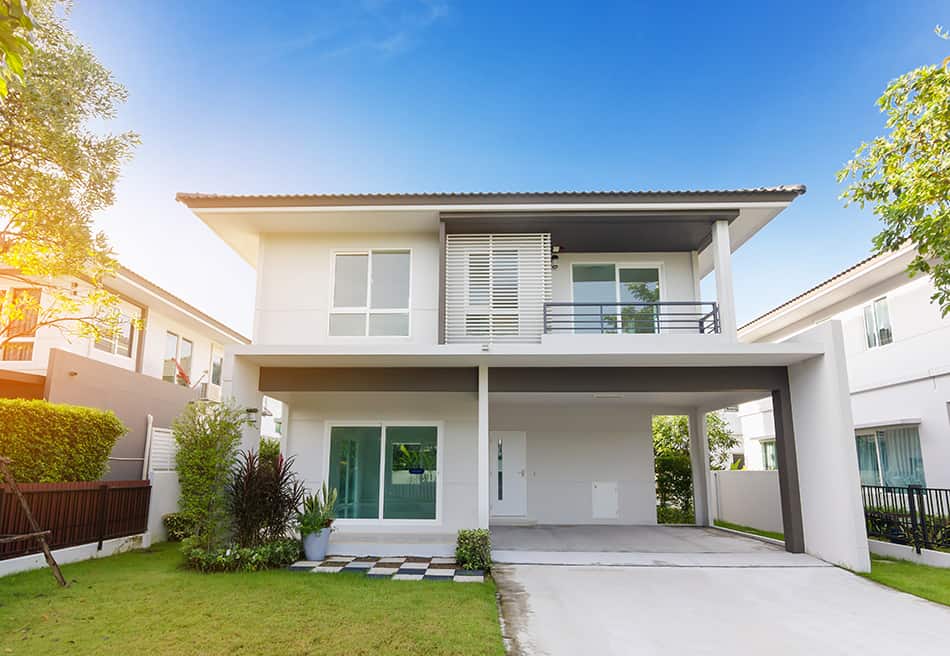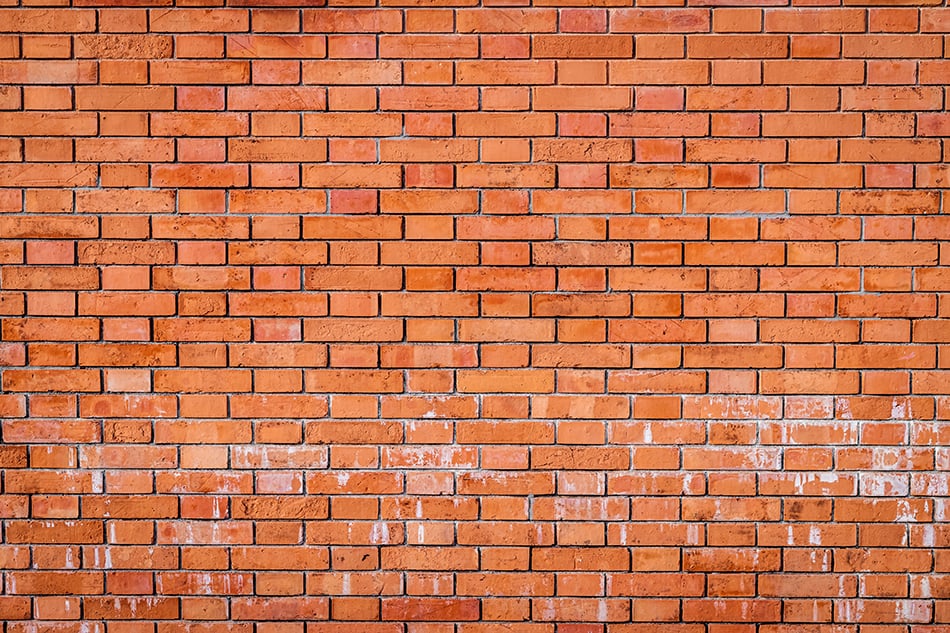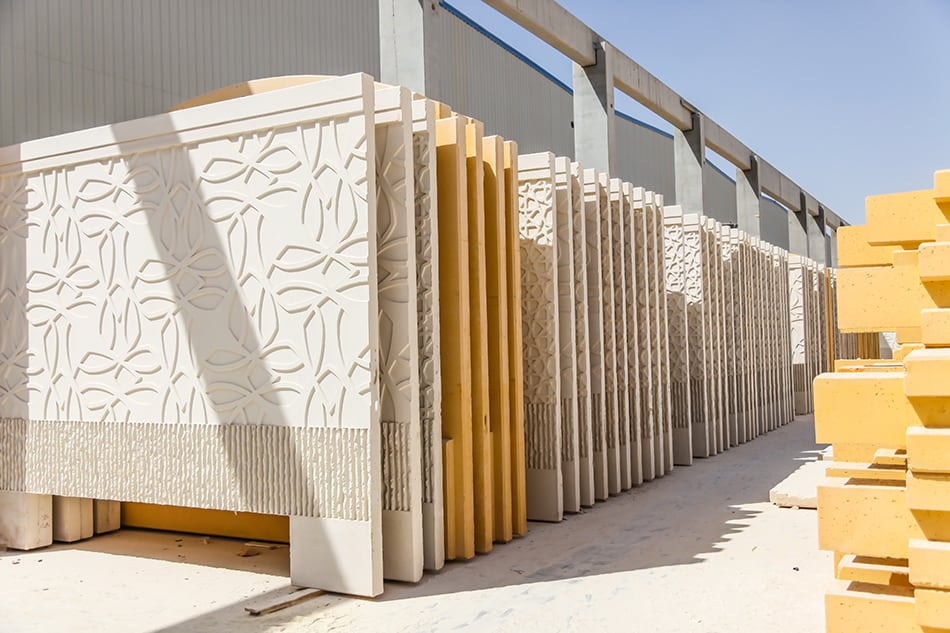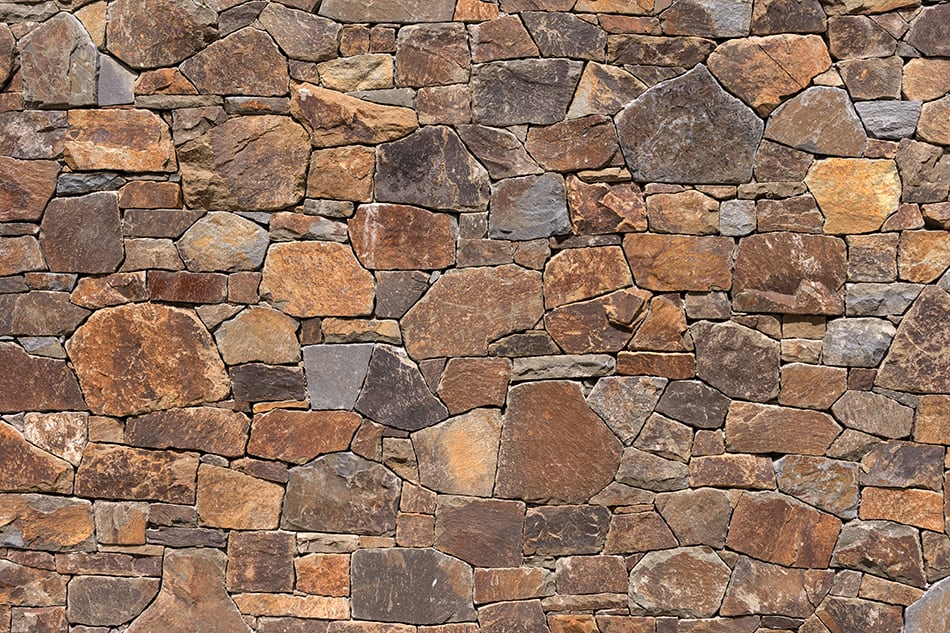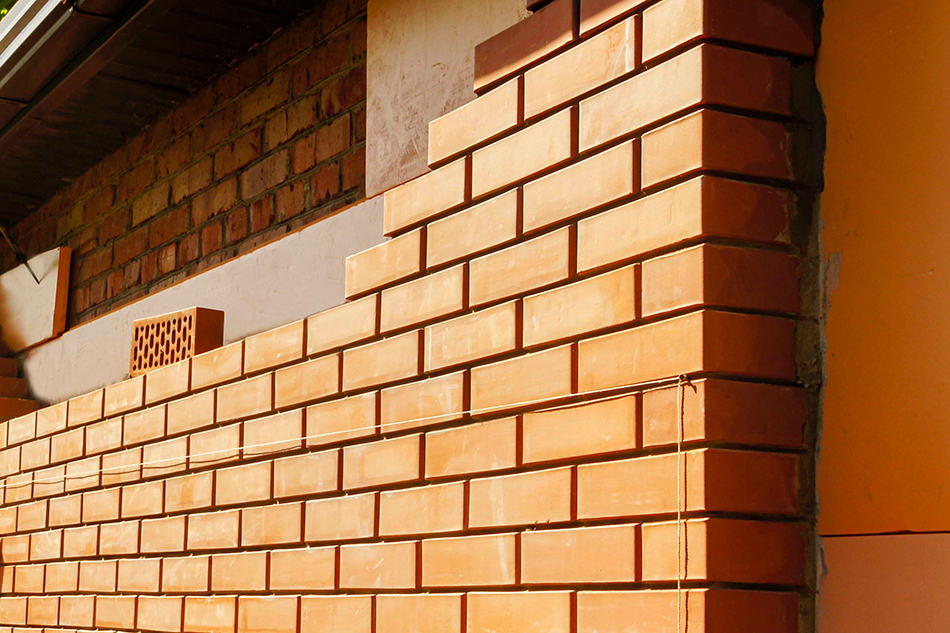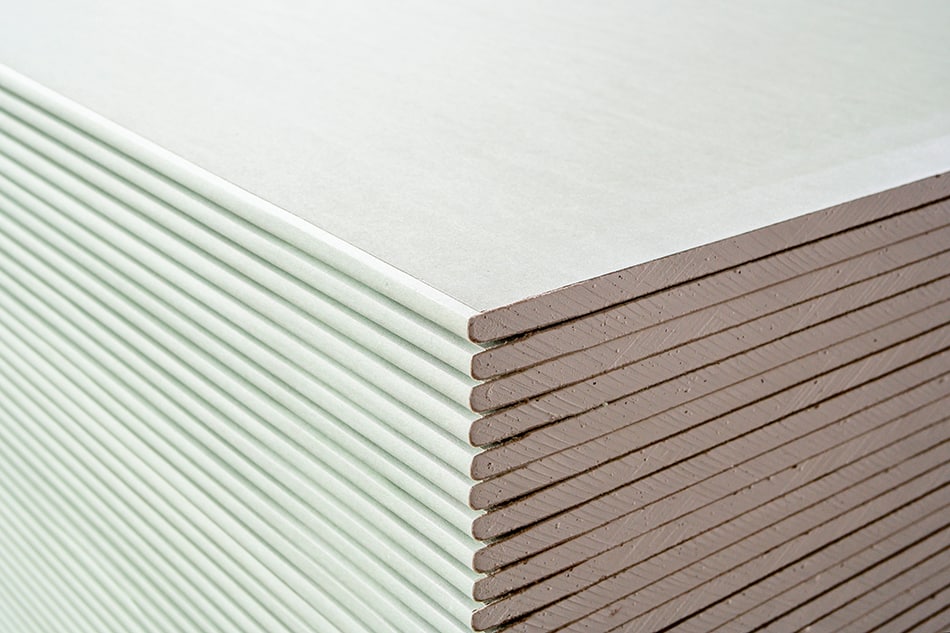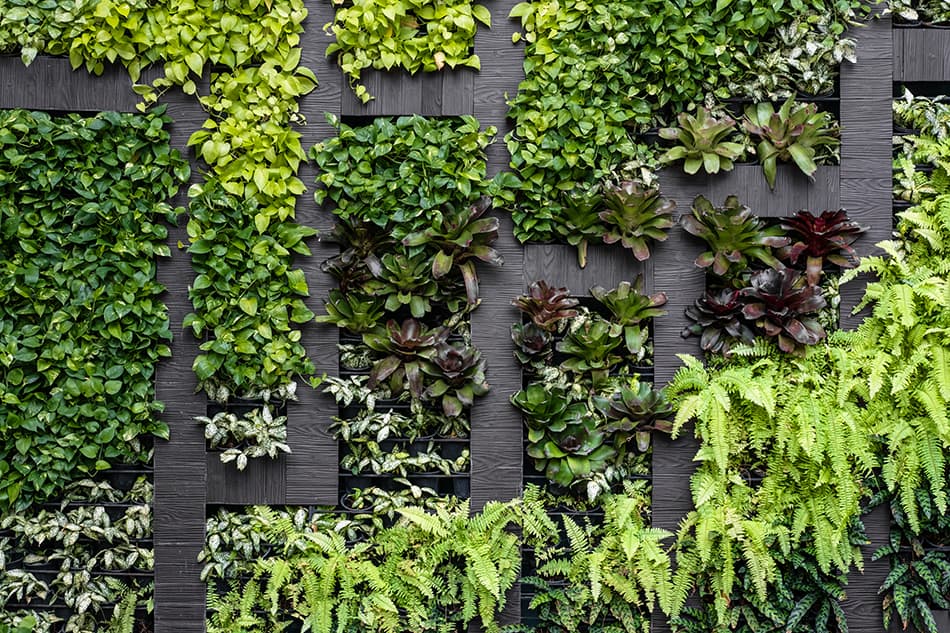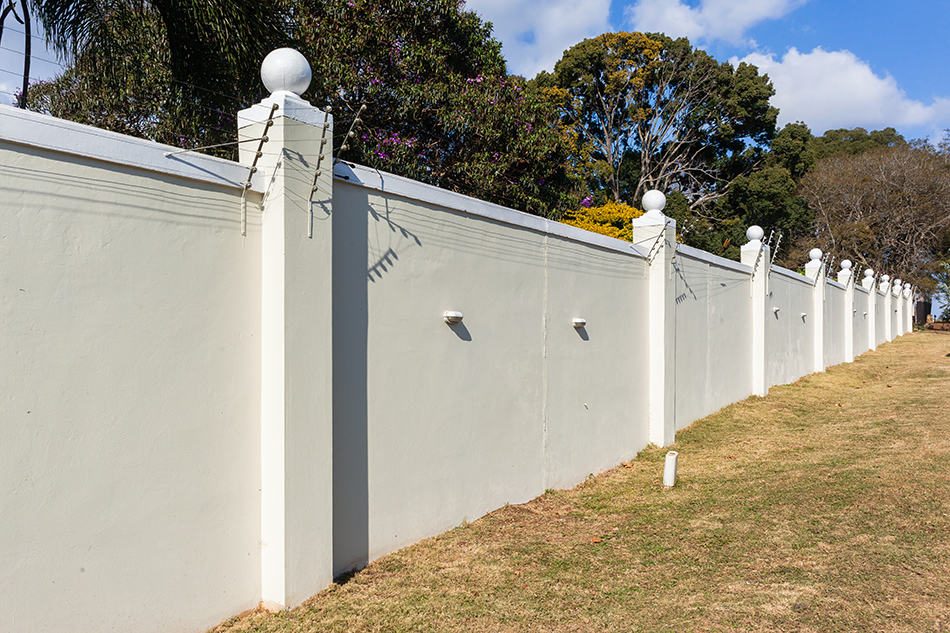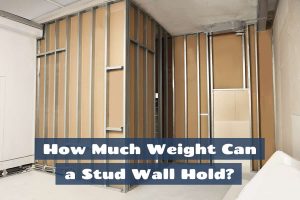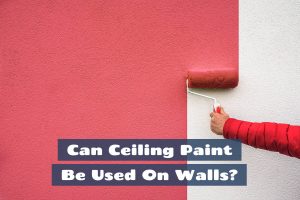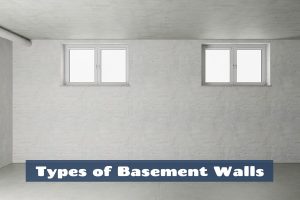A wall, in the most simplistic terms, is a solid vertical structure; however, there are many types of walls that can be made from numerous materials and serve a whole host of purposes.
Here we cover the many different types of walls used in construction or around the home and garden.
Load Bearing Walls
Load-bearing walls are an important part of buildings that provide structural integrity. They support the weight put on them from above, including supporting the weight of a roof and higher-up stories.
Load-bearing walls need to be strong and sturdy and cannot be knocked down without compromising the integrity of the building. Types of load-bearing walls include:
Brick Wall
Brick walls can be made from many types of bricks, including concrete blocks. In a brick wall, the bricks are held together by cement, and once complete, can be left as they are or rendered in a cement plaster to hide the brickwork. This is usually the case with concrete blocks as they are not attractive like regular bricks.
In some parts of the world, such as Europe, brick walls are commonly used in building homes and public buildings because they are good at keeping the internal parts of the building cool in summer and warm in winter.
However, brick-built walls have fallen out of favor in other parts of the world, especially those where earthquakes are common because brick walls famously perform very badly in these instances.
Bricklaying is a highly skilled job, and in many parts of the world, it is a dying trade, which has led to the decline of brick-built walls. Brick walls take more time and money to construct compared to wooden or metal framed houses, and therefore they will typically have a higher purchase price.
Precast Concrete Wall
Precast concrete walls can come in any shape and size, which makes them great for custom builds; however they also come in a range of standard mold sizes.
A precast concrete wall will be cast off-premises, usually in a factory, where it will also be cured. Once it is ready, it will be transferred to the building site via a lorry and crane, where it can be lifted and lowered into place.
Precast concrete walls are a good alternative option to brick walls when you need a load-bearing wall because they arrive at the site ready to put in situ, and therefore can make a building go up much quicker compared with the relatively slow process of bricklaying.
Precast concrete walls also tend to be a more cost-effective option than other types of load-bearing walls, and they also offer practicality. Precast concrete walls can be used in homes or in gardens but are not aesthetically very attractive, so they will usually need to be cladded, plastered, or have siding applied.
Retaining Wall
A retaining wall is used in an area where you want to interrupt the natural sloping of the land. These are often used in backyards where a retaining wall will be built to keep soil on one side so that a level area can be made on the alternate side.
Retaining walls are also commonly seen along highways where a road has been created near sloping land, and the retaining wall is doing the job of holding the soil off from falling into the road. Retaining walls need to be strong and rigid in order to not crumble under the pressure of the soil. In many instances, a retaining wall will need underpinning or deep foundations in order to keep the soil back.
Stone Wall
There are different types of stone walls which are named according to the type of stone used. A stone that has been shaped and smoothed into brick-like pieces is called a dressed stone, while a wall built from rugged stones is called a rubble wall.
Stone has been used to construct walls for centuries, as it is an extremely hardy material. This is proven by the fact that some of the oldest structures in the world are constructed from stone. Today stone walls are less common because they are among the most expensive types of walls to build and also require the labor of a skilled craftsman.
Like brick walls, stone walls are held together with a layer of concrete mortar between each stone. They provide many advantages, such as resistance to fire, rotting, and pests.
Many fireplaces in older homes are made from stone because it is a non-combustible material. Stone walls are strong enough to offer a good level of protection against natural disasters such as tornadoes and hurricanes. They also help to retain heat in a building during cold times of the year and help to keep the property cool in the summer.
Stone walls are the most durable types of walls, which will give the building a longer lifespan than any other type of construction. Stone walls are also very attractive, which means they don’t need to be plastered to cover up the blockwork in the same way that brick walls might need to be.
Cavity Wall
Cavity walls are a type of masonry wall which are commonly used for the exterior wall of modern brick-built properties.
A cavity wall is named as such because it is made up of two parallel walls running alongside each other, which have a gap, or cavity, in between them. The cavity helps to prevent moisture from seeping in, as rainfall would have to penetrate through several layers before it could reach the interior of the property.
The cavity can also be used to slot thermal insulation into, which will help to regulate the temperature of the building. The space between the two skins of a wall in cavity walls also allows the bricks to breathe and benefit from better airflow, which helps to prevent problems with dampness and mold.
Cavity walls help to improve a property’s insulation, and they also help to create a better sound barrier compared with single-layer brick walls.
Non-Load Bearing Walls
Non-load-bearing walls only support their own weight, and no other structural parts of the property are reliant upon them. Non-load-bearing walls are commonly used in the interior of homes to create separate rooms or in backyards.
A non-load-bearing wall can be demolished, and it won’t compromise the structural integrity of the building. This means if you have several small rooms which you want to open out into one large room, you can safely do so if your walls are non-load bearing.
Drywall Partitions
These types of walls are the most common types of walls used to create rooms in homes in North America. A drywall partition wall is much easier to build compared with brick walls as it simply requires a wooden frame to which sheets of drywall can be attached.
This makes drywall partitions go up incredibly quickly and mean that homes are constructed in a much shorter time. Drywall partition walls are also very cost-effective because the materials needed are inexpensive. Sheets of drywall will be taped together in order to hide any joins.
Drywall partitions will be hollow underneath the drywall sheets, and this vacant space can be filled with insulation, and it is also where wiring or pipework can be hidden so that the end result of the rooms has a clean and flawless look.
Unlike brick walls, which cause a fair bit of mess when being built due to the wet cement needed to adhere them together, the process of constructing a drywall partition results in a minimal mess.
Drywall, as the name implies, is a type of dry construction that does not require wet cement or mortar, and so if you want to create two smaller rooms out of one large room, then a drywall partition will cause minimal disruption to your home and family while being built.
Drywall partition walls are enormously popular due to their low cost, quick construction, and the fact that they require little skill and can therefore be built by anyone with a reasonable DIY experience.
Compartment Wall
A compartment wall is one that is built to restrict the movement of fire, smoke, or toxic gases. These are common in large office buildings or apartment buildings, where they subdivide the space into more manageable risk areas.
They are designed to maintain the structural integrity of the building to slow the spread of a fire in order to allow residents more time to escape. The walls will be made of a fire-resistant material that is designed to prevent or slow down fire from ravaging the entire building.
Dwarf Wall
A dwarf wall is any type of wall that is low in height, generally less than three feet. These types of walls are most common around the front of properties, as they create a distinct border that prevents others from walking onto your lawn or intruding on your space while also allowing you to still have a good view from your windows or while sitting outside your home.
Dwarf walls can also be used as a landscaping tool in backyards to create designated spaces for plant borders or to mark out a patio area. Dwarf walls can be made from brick, stone, metal, or wood and can serve a functional and decorative purpose.
Green Wall
A green wall, also known as a living wall, is a wall that has been covered in a growing substrate to allow plants to grow. Green walls are a great way to create additional growing space if you have a small yard, but they can also be used as a visual feature in larger areas.
Green walls are an ideal way of covering an unsightly wall on your property and making the space more attractive. They also have the added benefit of providing insulation to help keep the interior of the building cool in summer and warm in winter, helping to reduce power costs.
Green walls can be created very easily by planting climbing plants in containers or directly in the soil at the base of a wall, then attaching a trellis to the wall itself to encourage the climbers to spread out and cover the surface. Other types of green walls utilize hanging grow bag systems, which, when empty, look like a wall of fabric pockets.
Each pocket can be filled with soil and have a plant planted in it, and this will create a visually stunning green wall. The types of plants you can choose for a green wall are endless. You could create a herb wall, a flowering wall, or even a lawn wall using grass seed. A green wall is particularly beneficial in built-up or urban areas as they act as a natural air filter and help to purify the air you breathe.
Boundary Wall
A boundary wall is a wall that is used to define the boundary line around a home or property. Unlike dwarf walls, boundary walls are usually taller, in the region of six feet in height.
They are common around gardens, as they not only set out the boundary of your backyard, but they also create privacy and security. Boundary walls can be made from brick, stone, precast concrete, or any sturdy material you like. You can also use boundary walls to create shade around the perimeter of your backyard or to block out the sound and sight of neighboring properties.
Wall Functions
Depending on the type of wall you have, it could serve one or more of many functions. Some purposes of a wall include:
Privacy
One of the main functions of any type of wall is to provide privacy for those inside the building. If your home had no walls, there would be plenty of things you wouldn’t want to do while being on full display to your neighbors!
Office walls provide the privacy for you to have conversations with clients without being interrupted or to carry out sensitive work which you don’t want others to see or hear.
Bathroom walls allow you to shower or dress in privacy, and garden walls allow you to entertain in your backyard without other people watching you. Privacy is a vitally important component of our lives, which allows us to be ourselves without fear of judgment from others.
Insulation
Walls are vital for insulation. Many types of walls create insulation simply by being, such as stone walls which are so thick that they help a building to retain heat in winter and keep it cool in the summer.
Other types of walls create a space for insulation materials to be placed, such as cavity walls which have a gap ideal for thermal insulation, or drywall partition walls which can be insulated to improve the heat and sound properties of individual rooms.
The insulation properties of a wall help to keep us comfortable within our homes, and superior insulation can also significantly reduce the need for additional heating or cooling methods.
This can lower your power bills and also have a positive impact on the environment.
You can check out our post on standard wall thickness to get how thick it should be.
Protection
Walls create a physical barrier that keeps us protected from outside elements. Our property walls keep us dry during a storm or shaded from the sun.
Walls also protect us from wildlife by denying wild animals access to our homes. In the event of natural disasters, certain types of walls can help to keep us protected from strong winds or flooding.
Sound Reduction
One function of walls is to reduce the ability of sound to reach us. Thick walls can dull and soften loud noises or even prevent us from being able to hear some quieter noises such as traffic or birds singing. If you’re a light sleeper, then this will be particularly important to you, especially if you live in a busy area or near a train track.
The sound reduction properties of a wall can also be helpful if your family has noisy hobbies, such as playing musical instruments, or DIY, as they can prevent you from offending your neighbors with noise pollution. Interior walls are also important for preventing sound from spreading around the home, which is important in many situations.
If you have children, then you’ll be grateful for the walls in your home, which mean you can watch TV or entertain guests without rising waking sleeping kids, or if someone in your home works shifts, the walls will help to dull other sounds within the home so that the shift worker can sleep in peace during the day and not be woken up by people coming and going.
Support
Load-bearing walls are designed to support other parts of a building structure, such as the roof of a property or additional upstairs rooms. This makes the primary function of some walls to support the structural integrity of a property, thereby preventing it from sagging or collapsing in on itself.
Retain
Retaining walls serve the function of preventing sloping soil from impeding a chosen area, creating a physical barrier that is strong enough to hold land on one side.
Partition
Partition walls are used to divide a space up into a series of smaller rooms, therefore serving the function of defining spaces and creating privacy. Many offices have partition walls made of glass, which obviously does not offer privacy but instead is used to designate specific areas for different purposes and also to limit the spread of sound between offices.
In homes, partition walls are used to create separate living areas.
Safety
Some types of walls can be made from materials that are designed to improve the safety of a building, such as fire-resistant walls, but even regular walls offer safety functions to the inhabitants of a building.
In the event of a fire, walls prevent the spread of smoke, which can protect people in other rooms from smoke inhalation and allow them more time to safely leave the property. Walls also act as a physical barrier to limit the spread of toxic gases, which can be helpful for the safety of inhabitants in the event of a gas leak or a carbon monoxide problem.
Security
Walls help to keep unwelcome visitors out of our properties, serving as a solid physical barrier to prevent them from accessing the interior of our homes.
In doing this, walls are vital in keeping our homes or other buildings secure, acting as a deterrent to thieves. Tall garden walls can also be useful for this purpose, as they will be harder to scale compared with a standard height fence, therefore keeping potential intruders out of your property.
Visual Appeal
Although walls serve much more important functions than how they look, their visual appeal is something that is always considered when building a wall, and in fact, how a wall looks might be the deciding factor in choosing which type of material you use for your wall.
For exterior walls, which are made from wooden framing, the outside of the walls can be covered in a range of materials, including stone or brick cladding and wooden or PVC siding.
Brick external walls can be left as they are or covered in cement plaster and then painted, while stone walls are considered very attractive and are therefore often chosen based on their looks alone. Interior walls can be painted or covered in wooden paneling, while bathroom and kitchen walls might be tiled in order to make them waterproof and easy to clean up.
Cover Up
Walls hide a multitude of things that would look unsightly if they were on display. Hidden behind or within the walls of your home are pipes carrying water and wiring supplying power to anything electrical in your home.
In this sense, walls are used to cover up all the vitally important functioning parts of our home and allow us to live a life free from visually unappealing pipes and wires. The walls also cover these things to keep us safe, preventing the exploring fingers of children from investigating them.
